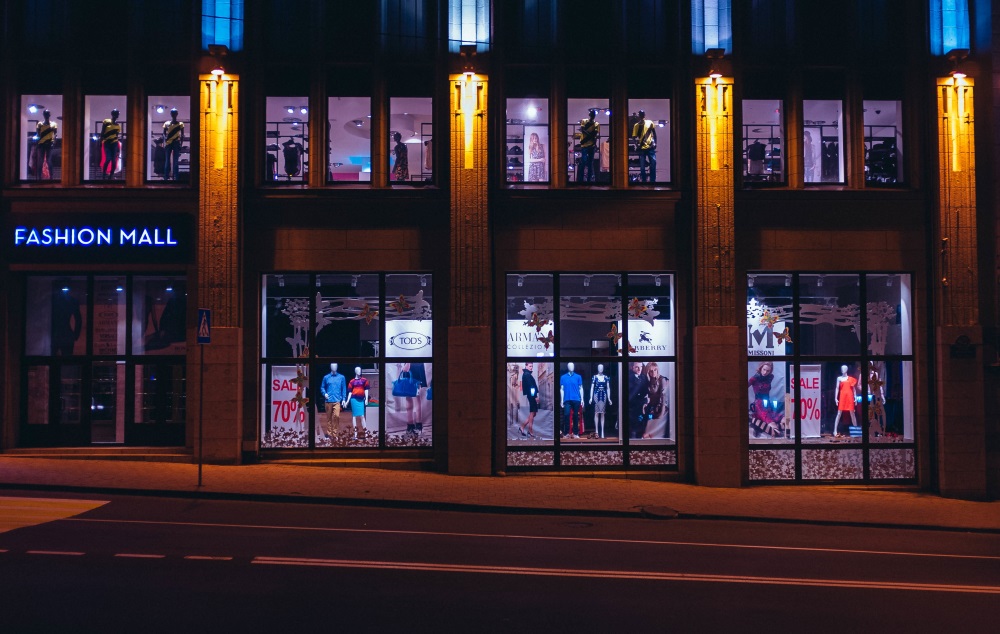
International Retailing Strategies for Success
As businesses expand their horizons, the allure of international markets becomes increasingly irresistible.
The retail sector, with its dynamic nature and direct consumer interface, finds itself at the forefront of global expansion.
However, venturing into international waters requires meticulous planning and strategic foresight.
This article delves into the strategies that retailers should consider when embarking on international retailing endeavors.
-
Market Research and Localization
- Understanding the Terrain: Comprehensive market research helps retailers gauge consumer preferences, purchasing habits, and cultural nuances of the target market.
- Localization: Adapting products, services, and marketing campaigns to resonate with local tastes and values ensures better market penetration.
-
Entry Modes
- Joint Ventures: Partnering with local retailers can offer insights into the market, share risks, and provide a more seamless entry.
- Franchising: This allows retailers to expand without heavy capital investment, leveraging local entrepreneurs’ expertise and resources.
- Wholly Owned Subsidiaries: For retailers with substantial resources and a deep understanding of the market, setting up their own stores can offer better control and higher returns.
-
Supply Chain Management
- Local Sourcing: Leveraging local suppliers can reduce costs, improve supply chain efficiency, and resonate with the ‘local produce’ sentiment of consumers.
- Centralized vs. Decentralized Distribution: Retailers must decide whether to have a central global distribution center or multiple regional ones based on factors like delivery times, costs, and market demands.
-
Digital Integration
- E-commerce Platforms: Establishing a robust online presence tailored to the local market can drive sales and increase brand visibility.
- Localized Digital Marketing: Digital campaigns should be culturally relevant, leveraging local influencers, events, and platforms for maximum impact.
-
Cultural Sensitivity and Adaptation
- Store Layout and Design: The store’s ambiance, layout, and design should align with local cultural and aesthetic preferences.
- Training and Staffing: Hiring local staff and providing training on the brand’s values ensures consistent service while retaining a local touch.
-
Regulatory Compliance
- Understanding Local Laws: From labor laws to consumer protection regulations, retailers must be well-versed with local legal requirements.
- Ethical Considerations: Beyond mere legal compliance, ethical practices in areas like sourcing, employment, and advertising are crucial for brand reputation.
-
Competitive Analysis
- Positioning in the Market: Retailers must understand the competitive landscape, deciding whether to position themselves as premium, budget, or somewhere in-between.
- Leveraging Unique Selling Propositions (USPs): What sets the retailer apart in their home market can be a significant advantage internationally if positioned correctly.
-
Continuous Feedback and Iteration
- Feedback Mechanisms: Establishing channels to gather consumer feedback helps in real-time strategy adjustments.
- Iterative Approach: The international retail landscape is ever-evolving. Regularly revisiting and tweaking strategies based on market responses ensures sustained success.
International retailing is a complex, challenging, yet immensely rewarding endeavor.
A well-crafted strategy, rooted in research and cultural understanding, can pave the way for global success.
As retailers navigate the vast expanse of global markets, adaptability, resilience, and a keen understanding of local nuances become their most trusted allies.
Cross-Cultural Differences and Challenges
The allure of global markets has led many retailers to expand beyond their domestic borders.
However, the journey into international retailing isn’t merely about replicating a successful domestic model in a foreign land.
One of the most significant hurdles retailers face is understanding and navigating the cross-cultural differences and challenges.
This article delves into these nuances and offers insights into managing them effectively.
-
Consumer Behavior and Preferences
- Purchasing Habits: In some cultures, consumers may prefer frequent, small-scale shopping trips, while in others, monthly bulk purchases might be the norm.
- Brand Loyalty vs. Exploration: Certain cultures value brand loyalty, while others are more adventurous, always seeking the newest products on the market.
-
Communication Styles
- Direct vs. Indirect: While some cultures appreciate straightforwardness, others might find it rude, preferring more indirect and polite ways of communication.
- High-Context vs. Low-Context: In high-context cultures, much remains unsaid, with meaning derived from context. In contrast, low-context cultures rely on explicit communication.
-
Social Norms and Etiquettes
- Gestures and Symbols: Something as simple as a thumbs-up can have different meanings across cultures. Retailers must be aware of local gestures and their interpretations.
- Gift-Giving: In some cultures, giving and receiving gifts has specific etiquettes, like refusing a gift several times before accepting.
-
Negotiation Styles
- Building Relationships: In many Eastern cultures, business dealings require cultivating personal relationships first.
- Bargaining Culture: Some markets expect and respect a good bargain, while in others, fixed pricing is the norm.
-
Time Perception
- Punctuality: While being on time is seen as a sign of respect in many Western cultures, in others, time is more fluid, and delays are expected and accepted.
- Long-Term vs. Short-Term Orientation: Some cultures prioritize immediate results, while others have a more extended outlook, valuing long-term gains.
-
Hierarchies and Power Dynamics
- Respect for Authority: In hierarchical societies, decisions might be top-down, and questioning authority could be frowned upon.
- Collectivism vs. Individualism: Some cultures emphasize group harmony and consensus, while others prioritize individual initiative.
-
Aesthetic Preferences
- Store Designs: Bright, flashy colors might appeal to consumers in one country but might be considered garish in another.
- Product Aesthetics: Simple, minimalist designs might be popular in certain regions, while intricate, detailed designs might be favored elsewhere.
-
Challenges in Marketing and Advertising
- Humor and Sensitivities: What’s humorous in one culture might be offensive in another. Retailers must tailor their marketing campaigns to resonate with local sensibilities.
- Celebrations and Festivals: Understanding local festivals, holidays, and celebrations can offer retailers opportunities for themed sales and promotions.
Cross-cultural challenges in global retail management are multifaceted, but they also present opportunities.
Understanding and appreciating these differences can offer retailers a competitive edge, fostering deeper connections with consumers and ensuring sustainable success in international markets.
It’s not just about selling products but about building relationships, understanding values, and weaving the brand into the cultural fabric of the market.
Deciphering Entry Modes in Global Retailing
The prospect of global expansion is both enticing and daunting for retailers.
One of the most critical decisions in this journey is selecting the right mode of entry into the target market.
This choice can significantly influence the retailer’s success and sustainability in the new market.
This article explores the various entry modes in global retailing, offering insights into their advantages, challenges, and suitability.
-
Direct Exporting
- Description: Retailers directly export their products to foreign markets, typically using local distributors or agents.
- Advantages: Low investment, minimal risk, and a straightforward way to test the market.
- Challenges: Reliance on third parties, less control over branding and marketing.
-
Licensing and Franchising
- Description: Retailers grant a local entity the rights to use their brand name, business model, and other intellectual properties in return for royalties.
- Advantages: Rapid expansion, low investment, and leveraging local partner’s market knowledge.
- Challenges: Potential brand dilution, reliance on franchisees for quality control.
-
Joint Ventures
- Description: Retailers form a partnership with a local entity, sharing investment, risks, and profits.
- Advantages: Shared risk, combined expertise, and better understanding of the local market.
- Challenges: Potential conflicts in decision-making, sharing of profits.
-
Wholly Owned Subsidiaries
- Description: Retailers establish their own fully-owned operations in the foreign market.
- Advantages: Complete control over operations, brand consistency, and higher profit retention.
- Challenges: High investment, full exposure to risks, and complexities in managing foreign operations.
-
Mergers and Acquisitions
- Description: Retailers merge with or acquire an existing local entity to establish their presence.
- Advantages: Quick market entry, leveraging the acquired entity’s existing infrastructure and customer base.
- Challenges: High costs, potential cultural clashes, and complexities in integration.
-
E-commerce Platforms
- Description: Retailers leverage online platforms to cater to foreign markets without establishing physical stores.
- Advantages: Low investment, scalability, and flexibility in catering to various markets.
- Challenges: Logistics, local competition, and cultural nuances in online shopping behaviors.
-
Pop-Up Stores
- Description: Temporary retail spaces set up by retailers in foreign markets for a limited period.
- Advantages: Testing the market, creating brand awareness, and low commitment.
- Challenges: Short-term, requires impactful marketing to draw attention.
-
Strategic Alliances
- Description: Retailers form alliances with local businesses for mutual benefit without merging or acquiring.
- Advantages: Leverages strengths of both parties, flexible terms, and shared resources.
- Challenges: Ensuring aligned goals, potential conflicts in execution.
Choosing the right entry mode is pivotal in a retailer’s global expansion strategy.
It requires a thorough understanding of the target market, a clear vision of the brand’s goals, and a careful assessment of the risks and rewards associated with each mode.
By aligning their strategy with the market’s nuances and their organizational strengths, retailers can carve a successful path in the intricate maze of global retailing.
Case Studies of Trailblazing Global Retailers
The global retail landscape is dotted with brands that have not only conquered their domestic markets but have also made a significant mark internationally.
These retailers’ success stories offer invaluable lessons for aspiring global retailers.
This article explores the strategies of some of the world’s most successful global retailers through a series of case studies.
-
IKEA: Mastering Localization
- Overview: Originating from Sweden, IKEA is now a global household name in home furnishings.
- Strategy: While maintaining its core Scandinavian design, IKEA adapts its product range, store layout, and even food offerings to cater to local tastes. For instance, in Asia, IKEA offers bamboo-based products and features noodle dishes in its cafeterias.
- Outcome: IKEA’s blend of standardization and localization has won it loyal customers across continents.
-
Zara: Fast Fashion, Faster Logistics
- Overview: Spanish brand Zara, part of the Inditex Group, has revolutionized the fashion world with its rapid turnaround times.
- Strategy: Zara’s “fast fashion” approach is backed by a robust logistics network. It sources fabrics centrally but delays dyeing and stitching to react swiftly to market trends.
- Outcome: Zara’s agility allows it to offer the latest fashion in real-time, making it a global favorite.
-
Starbucks: Brewing Local Experiences
- Overview: Starbucks, from Seattle, has become the global synonym for coffee.
- Strategy: Beyond its standard offerings, Starbucks tailors its menu to local preferences, like Green Tea Frappuccino in Japan or Mango Passion Fruit Juice in Brazil. It also adapts its store interiors to resonate with local cultures.
- Outcome: Starbucks is not just a coffee shop but a local hangout spot in many countries.
-
Walmart: Scale and Supply Chain Mastery
- Overview: American giant Walmart’s success is anchored in its efficient supply chain and scale.
- Strategy: Walmart enters markets either organically or through acquisitions. It then leverages its buying power to negotiate with suppliers and streamline logistics.
- Outcome: Despite mixed results in some markets, Walmart’s emphasis on low prices driven by operational efficiency has made it a dominant player globally.
-
H&M: Collaborations and Sustainability
- Overview: Swedish brand H&M has carved a niche in affordable fashion.
- Strategy: H&M frequently collaborates with luxury designers, offering exclusive collections. Simultaneously, it’s heavily investing in sustainable fashion, appealing to environmentally conscious consumers.
- Outcome: H&M’s dual strategy of designer collaborations and sustainability has enhanced its global brand image.
The success stories of these global retailers underscore a few key themes: the importance of understanding local cultures, the need for operational efficiency, and the ability to adapt and innovate.
While each market poses its unique challenges, a customer-centric approach, underpinned by strong values and clear strategy, can pave the way for global success.
Unlock Your Potential in Retail Management.
Enroll in our Retail Business Academy Today
Transform Your Career & Business!




















